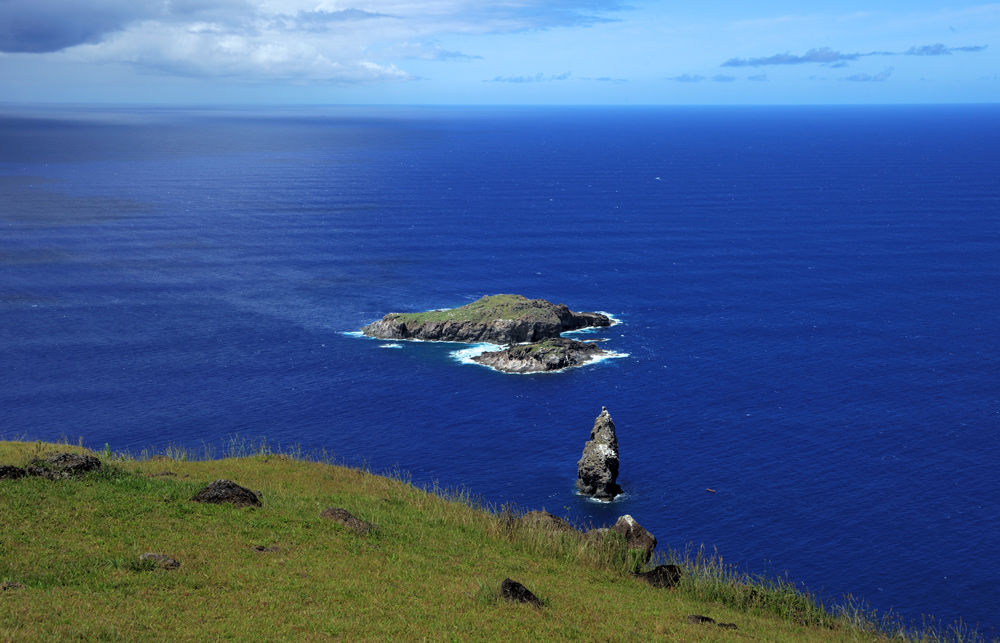
This studio of huge-form sculptors flourished until the beginning of the XIV century increasing production rate and size of the products.
However, the islanders produced not only stone giants, they quite successfully reproduced themselves. As a result, the ecological catastrophe was quickly organized. Nowadays there is a popular opinion that white people with their technological civilization and egocentric mentality are the main enemy of the environment, and technologically primitive cultures like Indians or Polynesians always lived in unity with nature and didn’t have a possibility and wishes to harm their environment. They had fewer possibilities than European civilization, it is true. But the rest… Local Armageddons were periodically organized by the hand of primitive cultures, and the islander is one of the examples.
At the beginning of the XVI century, the island population reached 10-15 thousand people. The study has shown that the island in the original condition could provide a life for only 2-3 thousand people. Also to that moment the islanders completely cut down the forest that covered the island. They cleared places to grow yams, they built boats for fishing, they transported moai across the island on wooden rakes. One way or another, they destroyed the forest completely. When first Europeans visited the island it was bald.
Only palaeontology studies have shown that previously it was completely covered with forest.
Nowadays the island looks this way. All trees that grow on the island now were brought by Europeans.
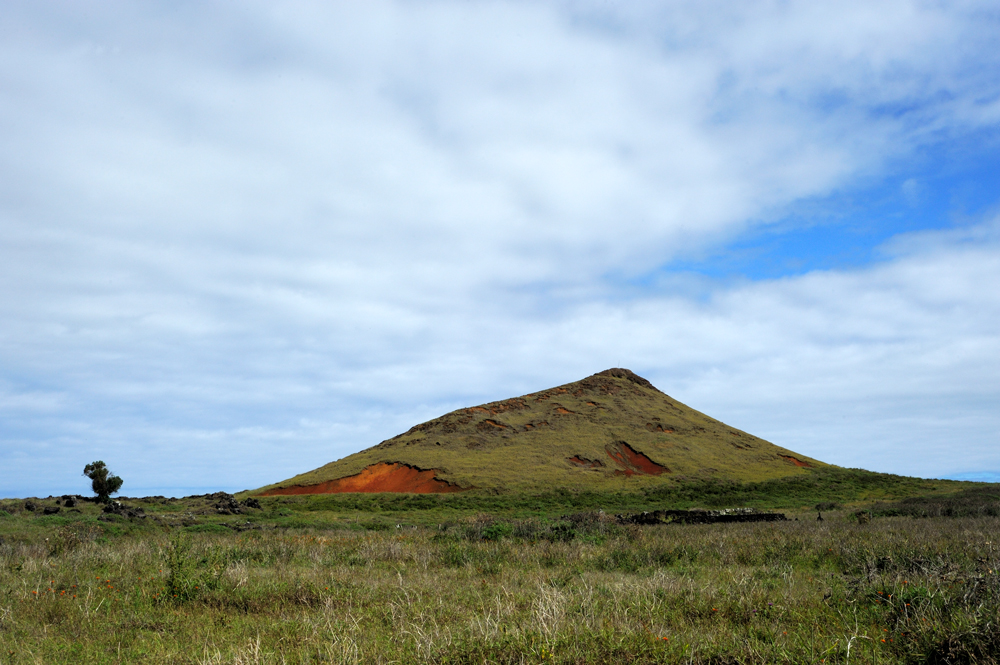

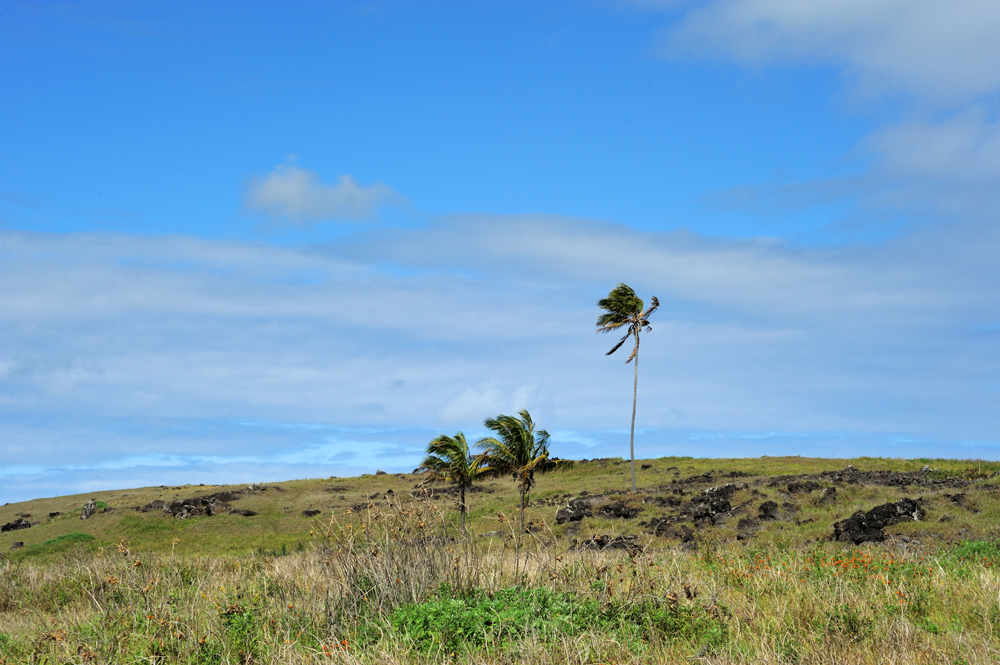
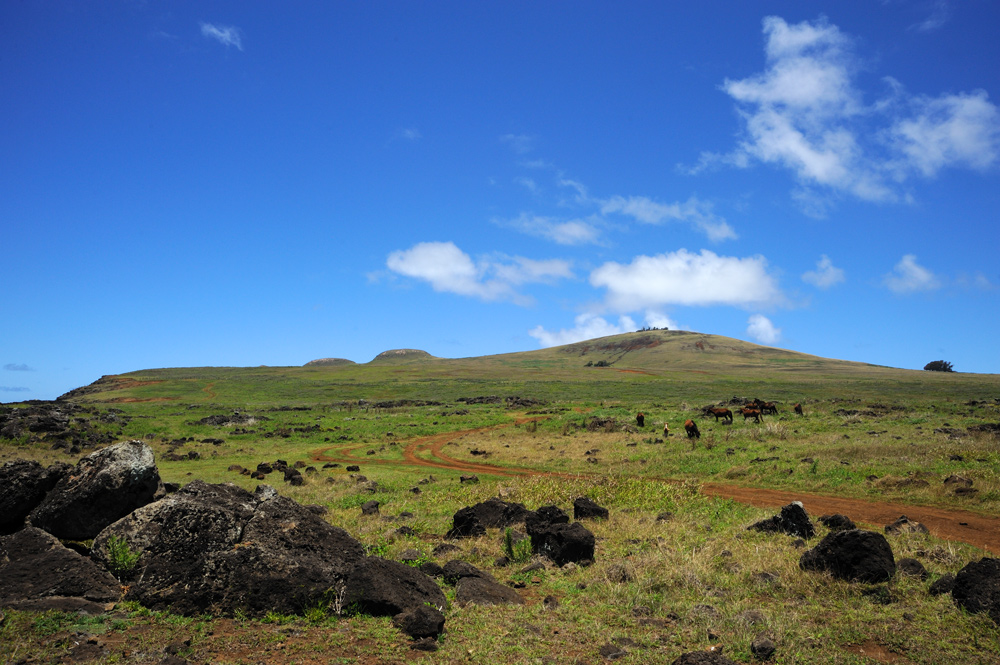

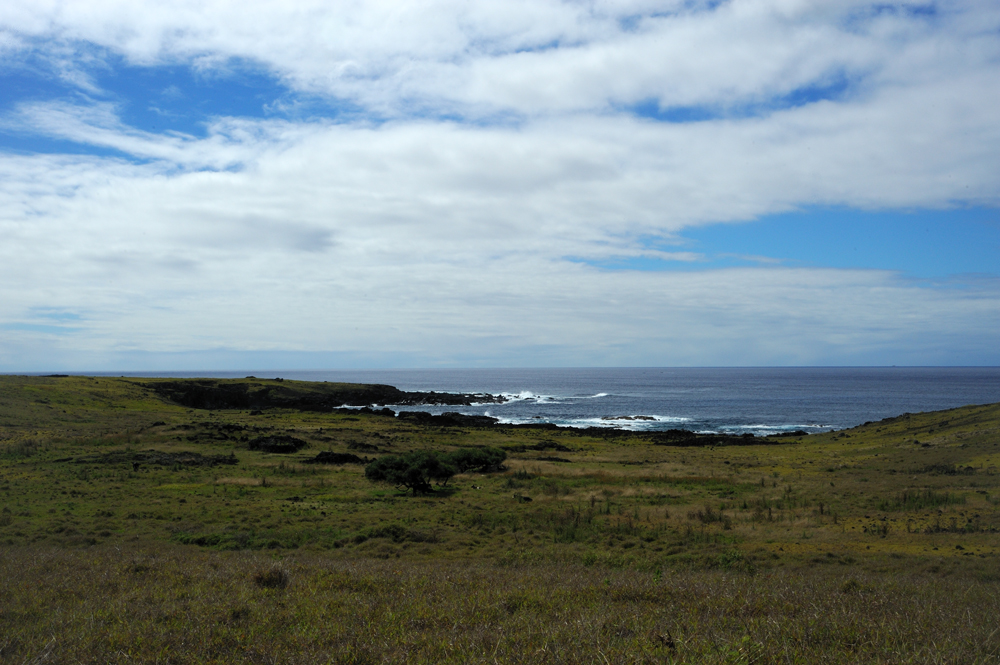
The absence of the forest quickly hurt the island economy. Traditional boats were not strong and didn’t serve for long. There was no material for new ones any more. Fishing, the main sours of the protein, was cut down.
Forest didn’t give any production any more, because didn’t exist any more. The islanders had only some yams and hens now. Famine came. All Polynesians practised cannibalism, but it was usually ritual cannibalism. On Eastern island, they eat each other because of hunger. Wars between clans started. At first “short-eared” bore arms against “long-eared”, and later every clan were in the war with others.
Wars between clans came along with moai deposition because fallen and broken moai cannot help to his people with his mana. The last moai were deposited between 1722 and 1774. At their first visit Europeans saw some moai and even made some drawing of them. Fifty years nobody visited the island and nobody knew what happened there, but the expedition of 1774 found the island desolated.
The expedition of Thor Heyerdahl and others after dug broken and forgotten moai from cultural layers.
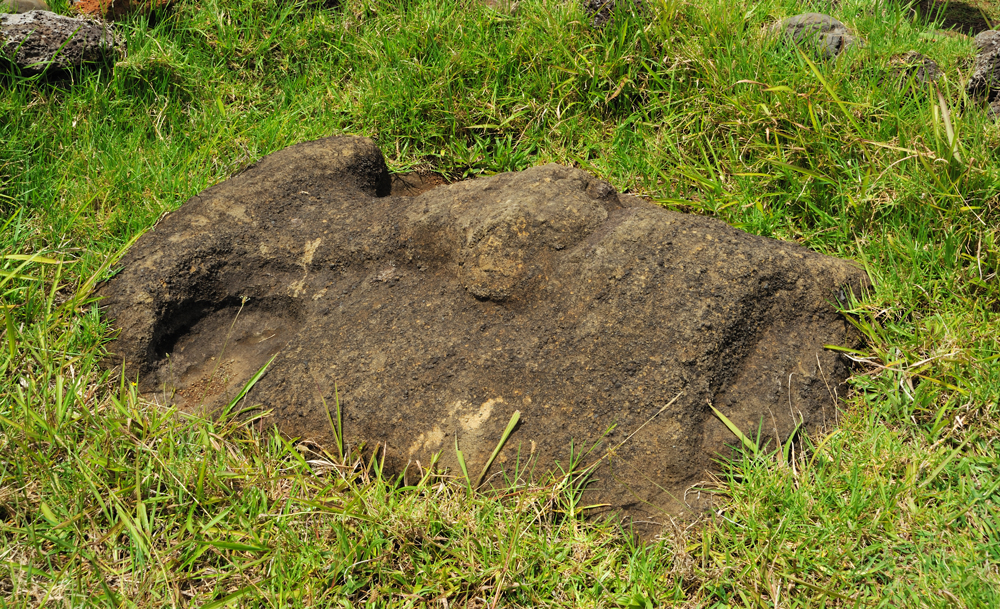
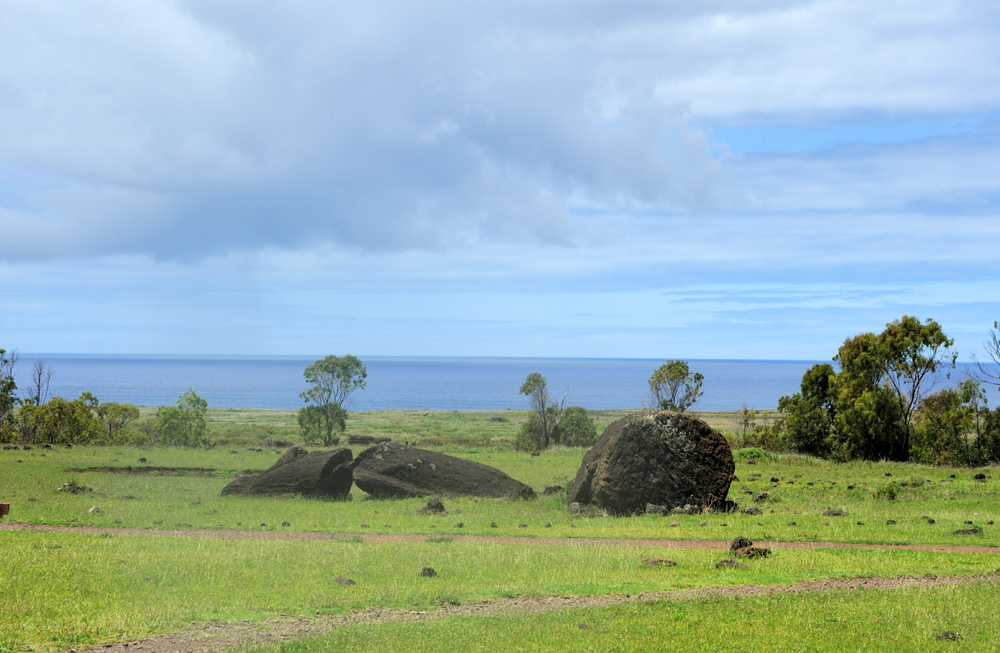

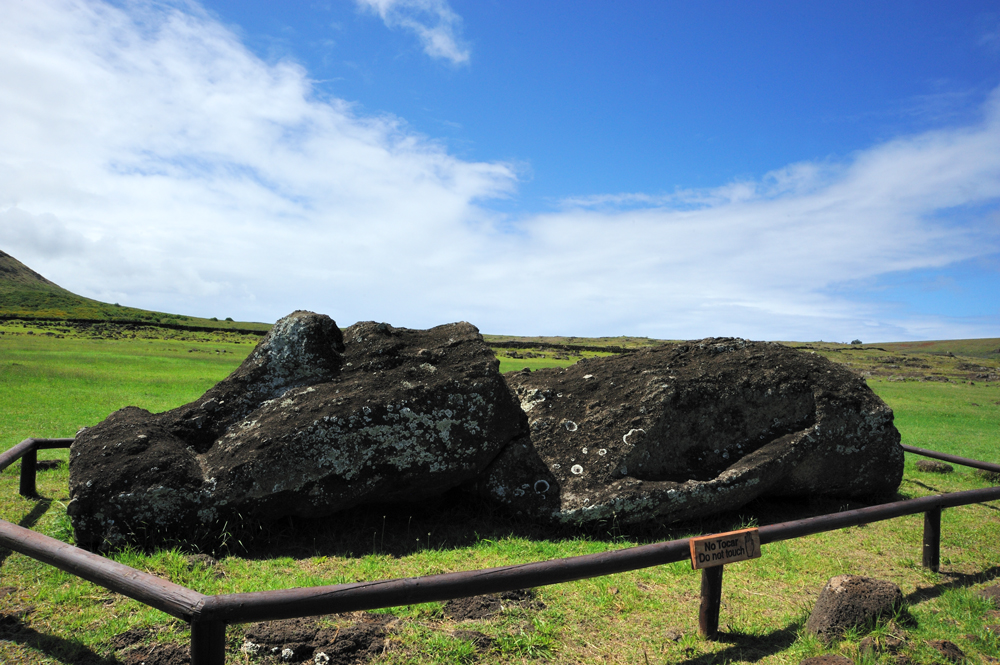
Life become worse every other day, ancestor mana didn’t help any more, and appropriately religious paradigm shift happened.
Island warriors moved the god Make-Make, who was responsible for fertility and human creation, to the top of the pantheon. Make-Make has the bird’s head, that happens sometimes with gods, and the islanders organized the cult of the “birdman”.
In the south-east corner of the island, right above the capital (and only settlement on the island) the volcano Rano Kau raises.
It is possible to hike or drive on its top.
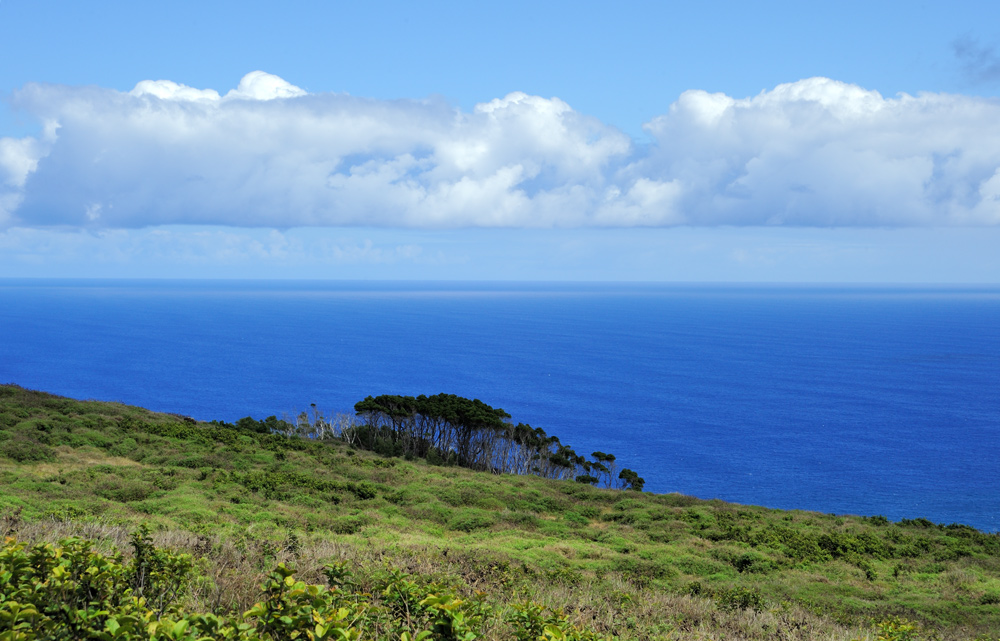
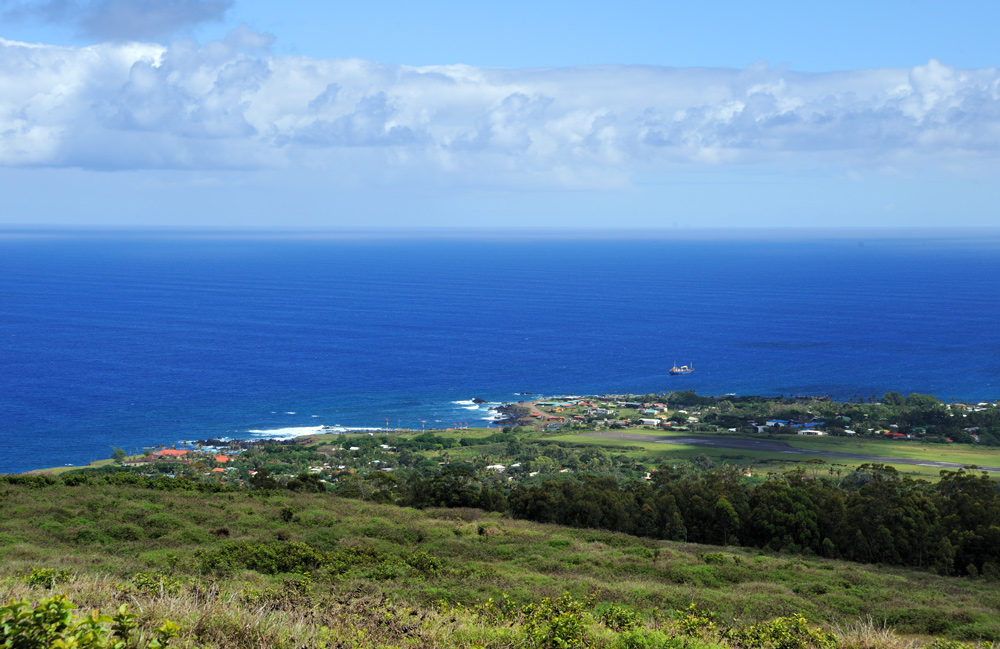
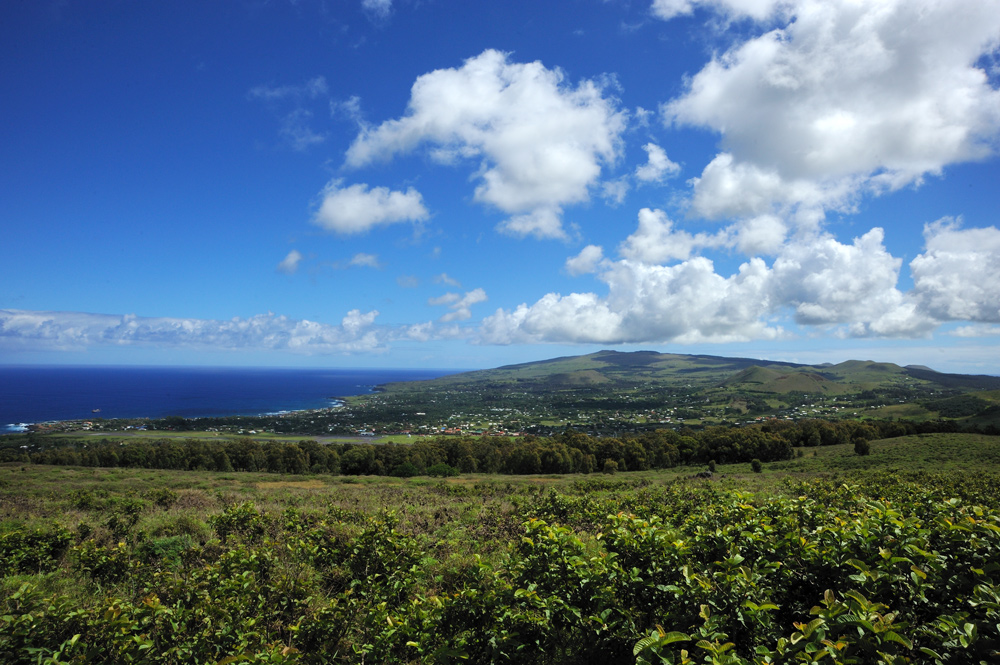
There is a lake with totora cane in the carter.
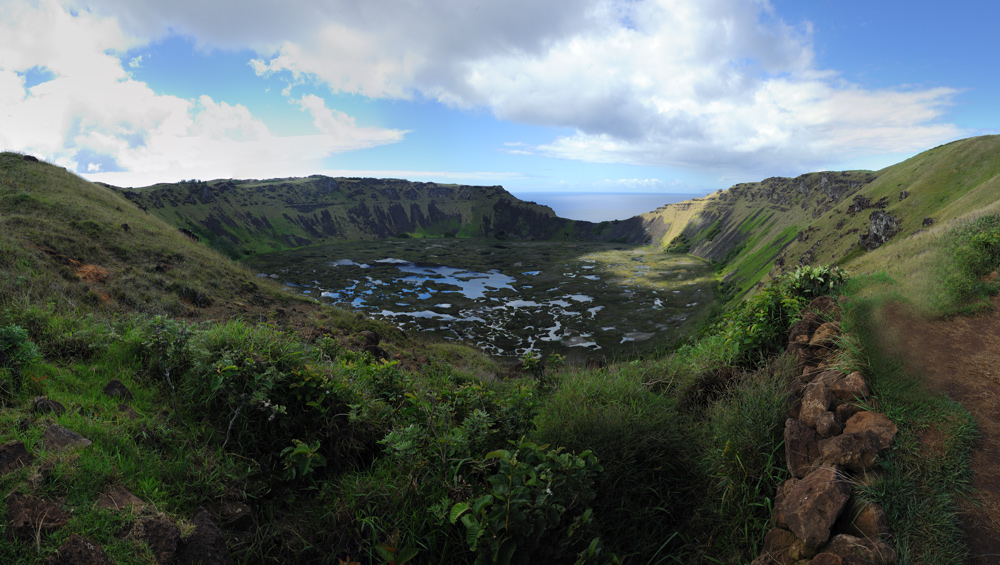
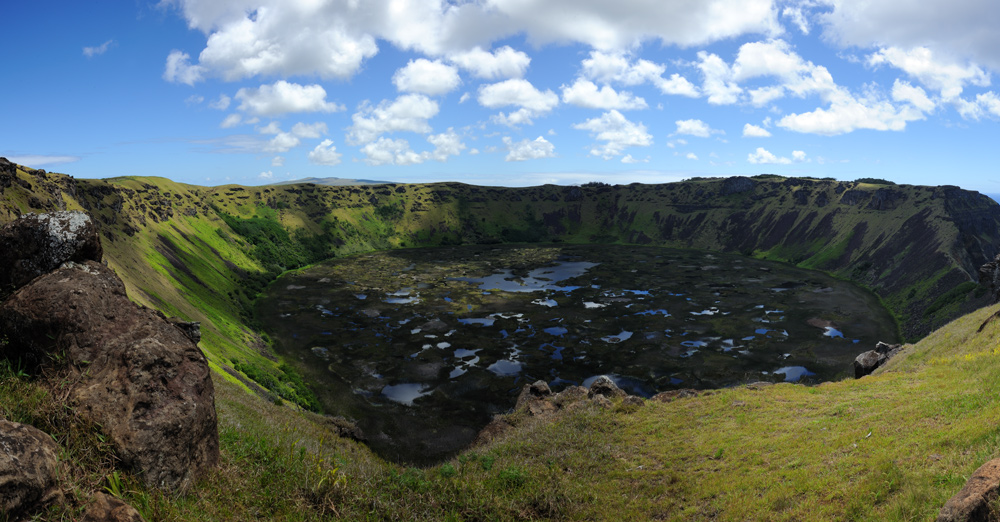
The crater edge from the seaside was a place of ceremonial village Orongo.
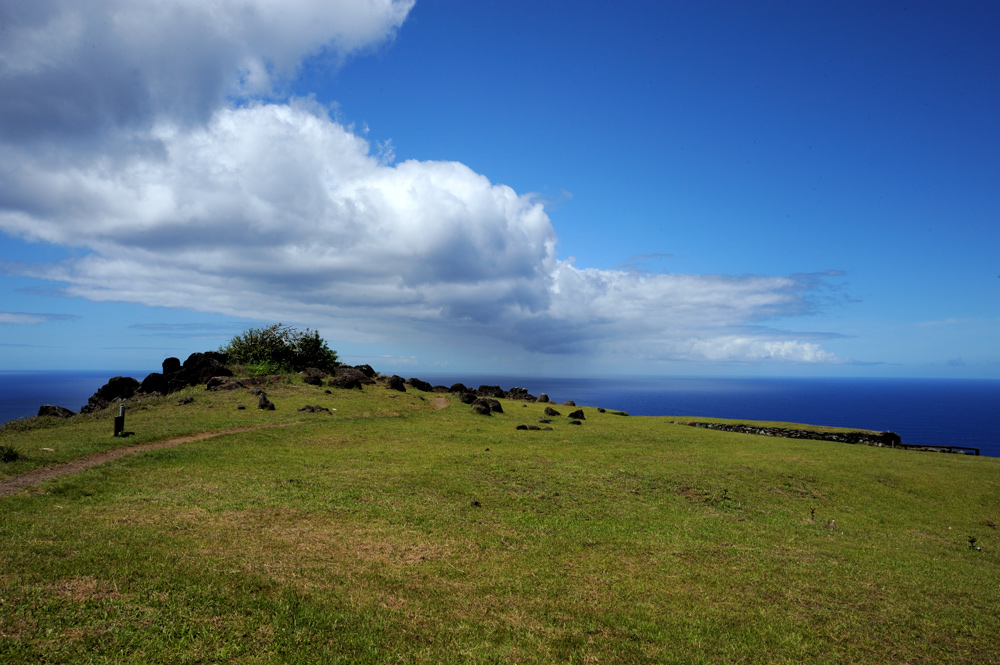
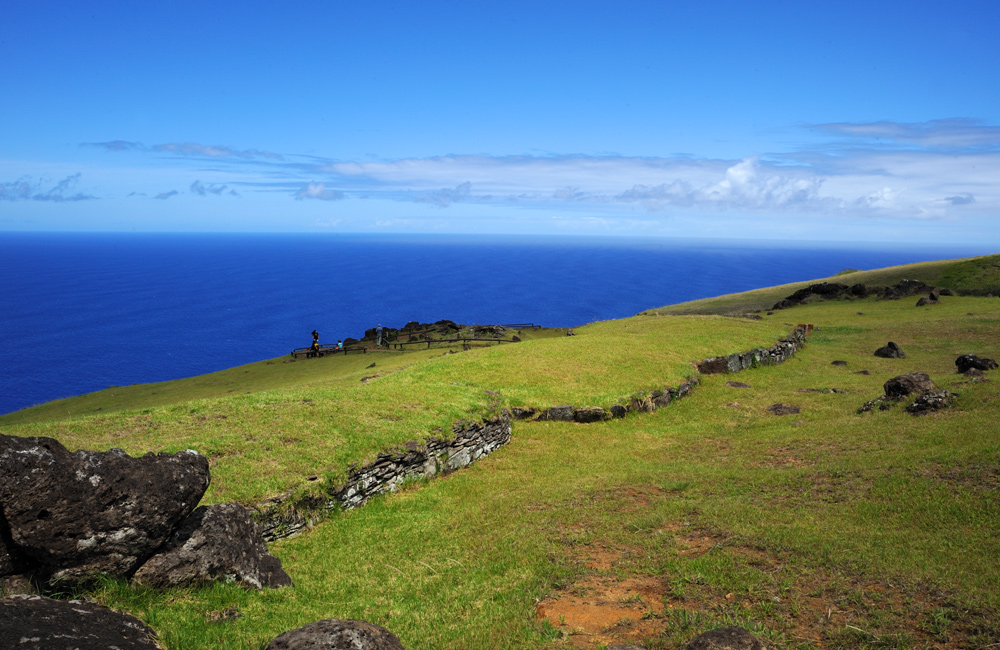
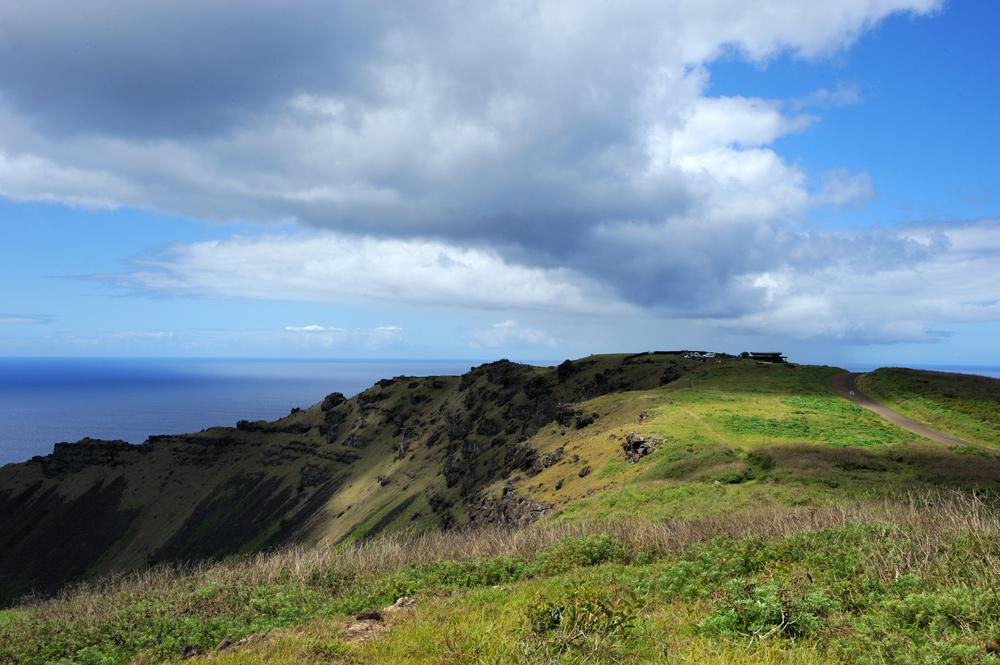

Stone adobe cottages connected to each other.
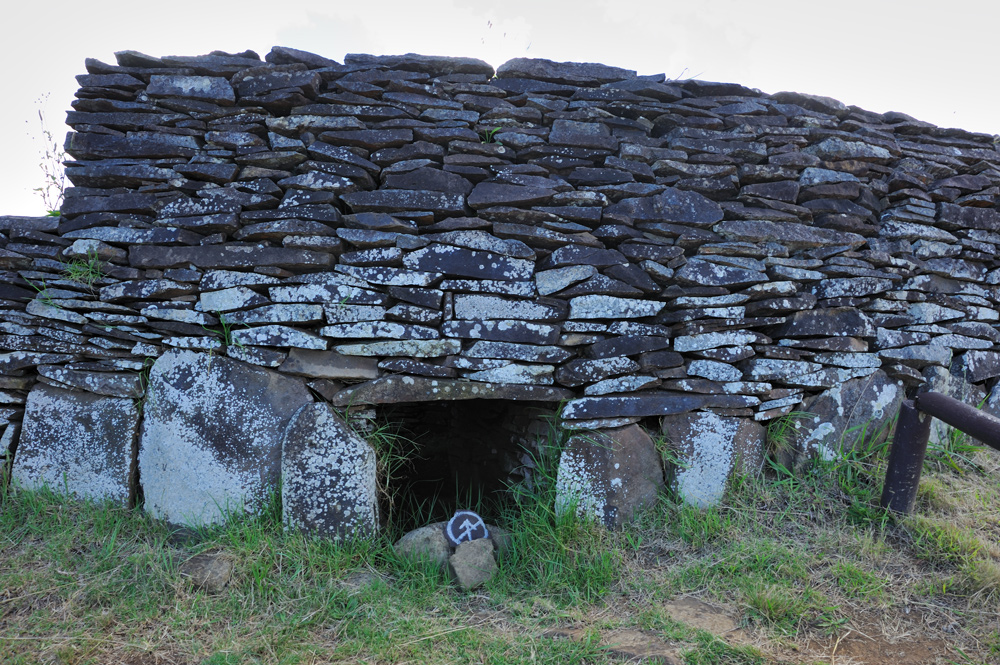
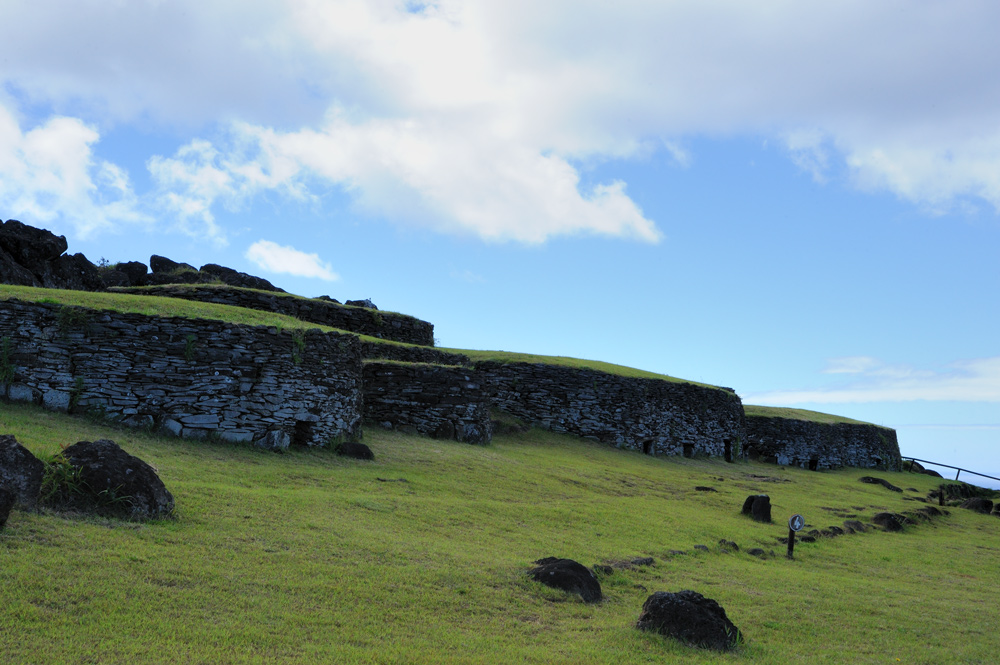
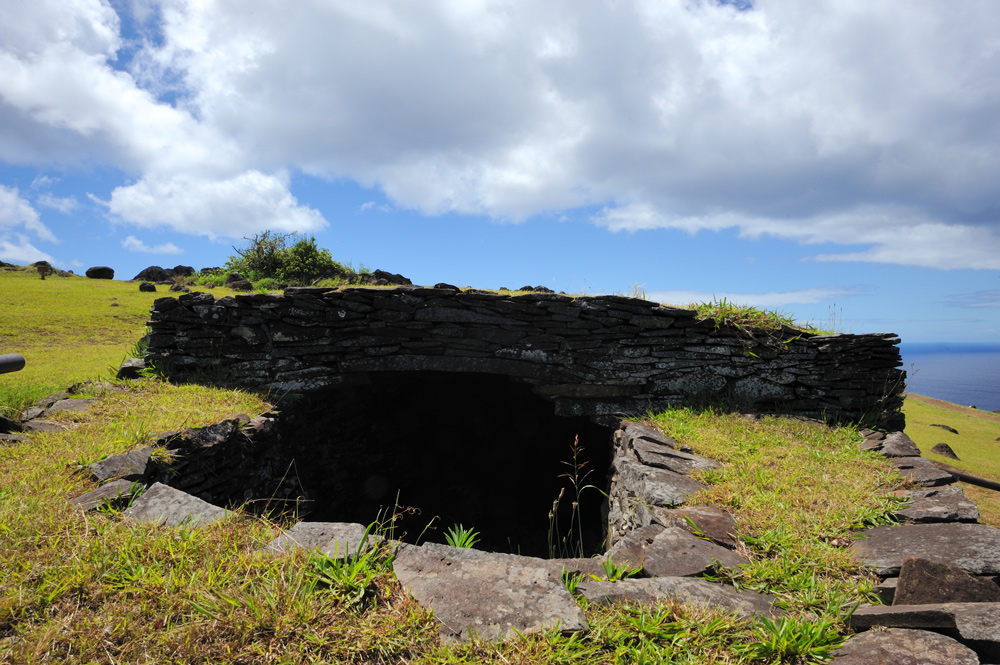
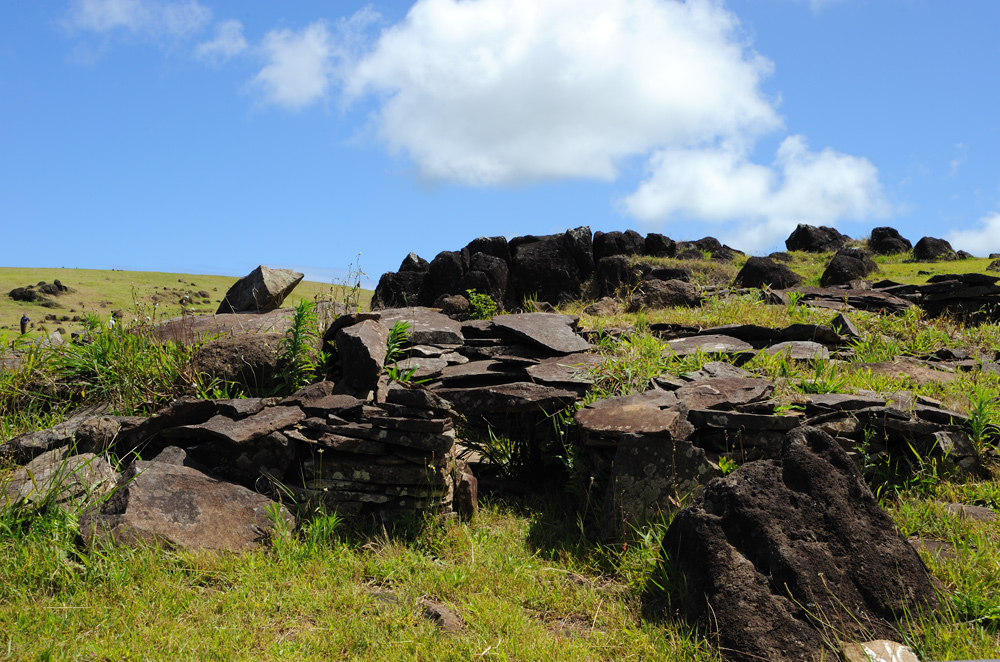
Orongo was a place where priests and other important people lived and where religious ceremonies were performed.
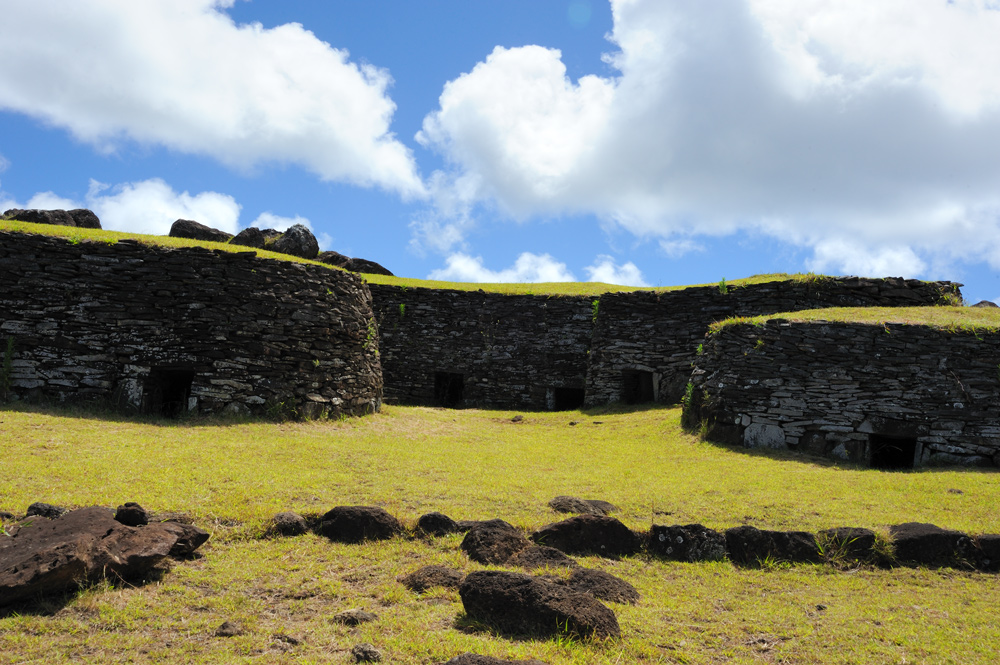
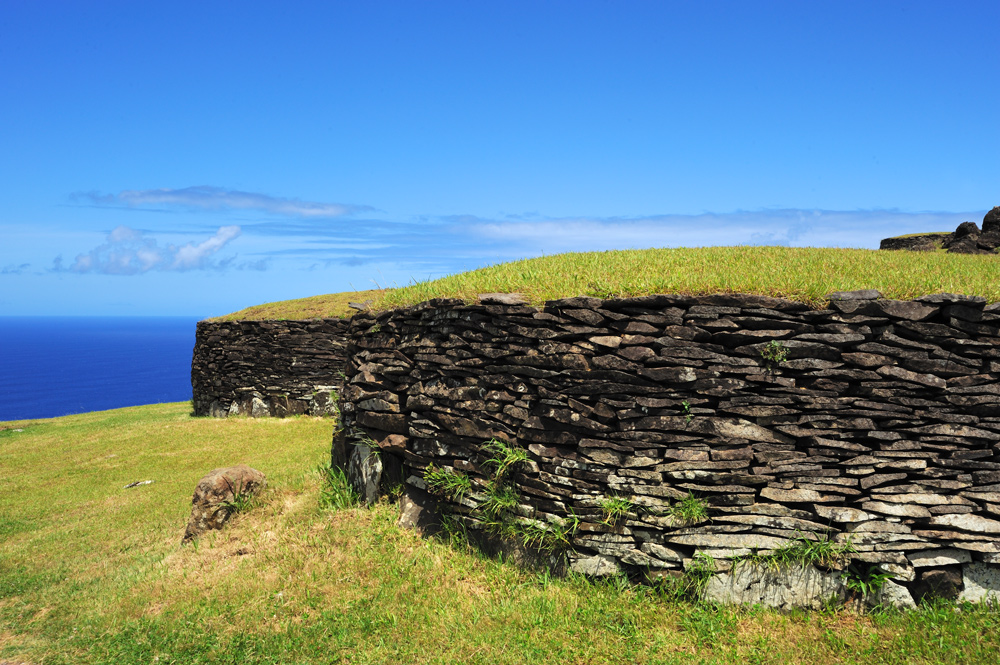
Every year in the spring, when sea birds came to the island to make new sea birds, the competition “Bird-man of the year” had a place. The small island on the top photo is called Monu-Nui. It is a nesting site for the black turn. In the competition day, a crowd of warriors on rickety cane boats rushed toward this island on priest’s signal. The first finder of turn egg became a distributor of all clan amenities for the next year.
He moved to Orongo and his portraits were carved on stones.
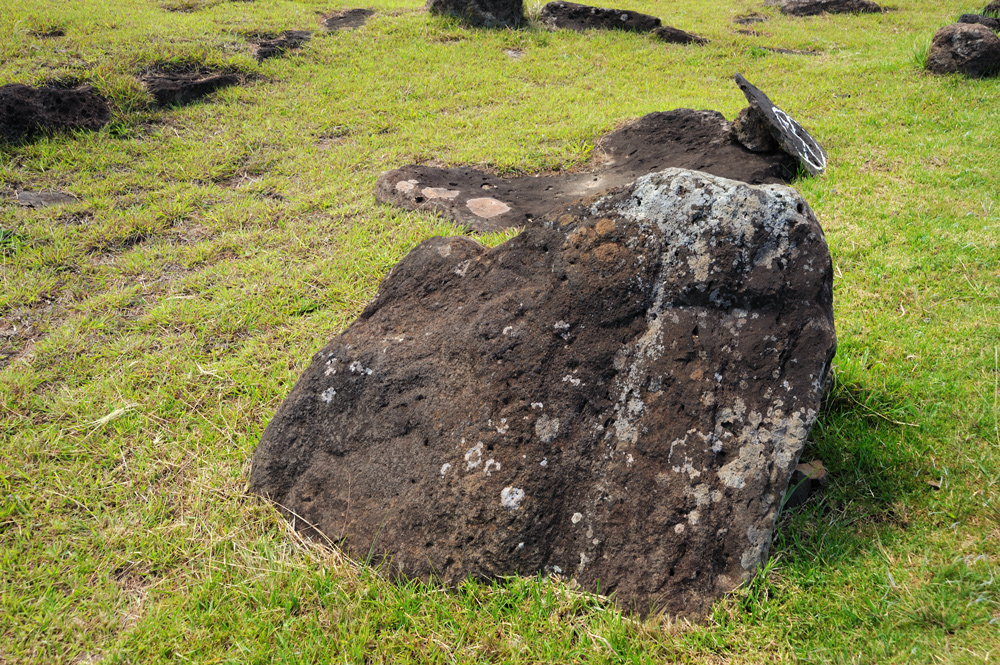
There are plenty of images of Make-Make and bird-men in Orongo. Unfortunately, the best of them can be seen only from a distance.

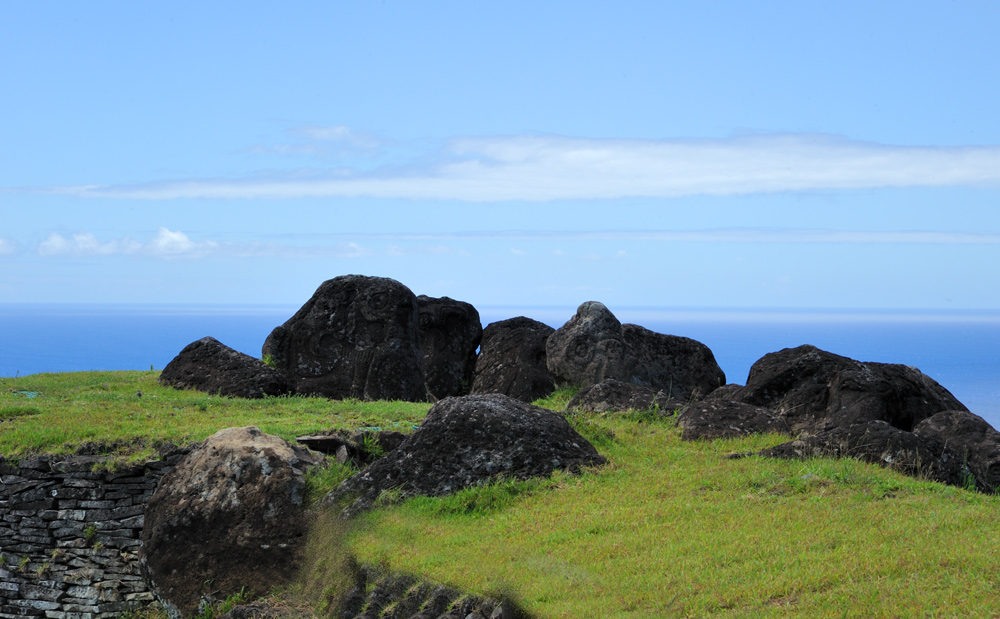
However, there is a nice stone near the town.
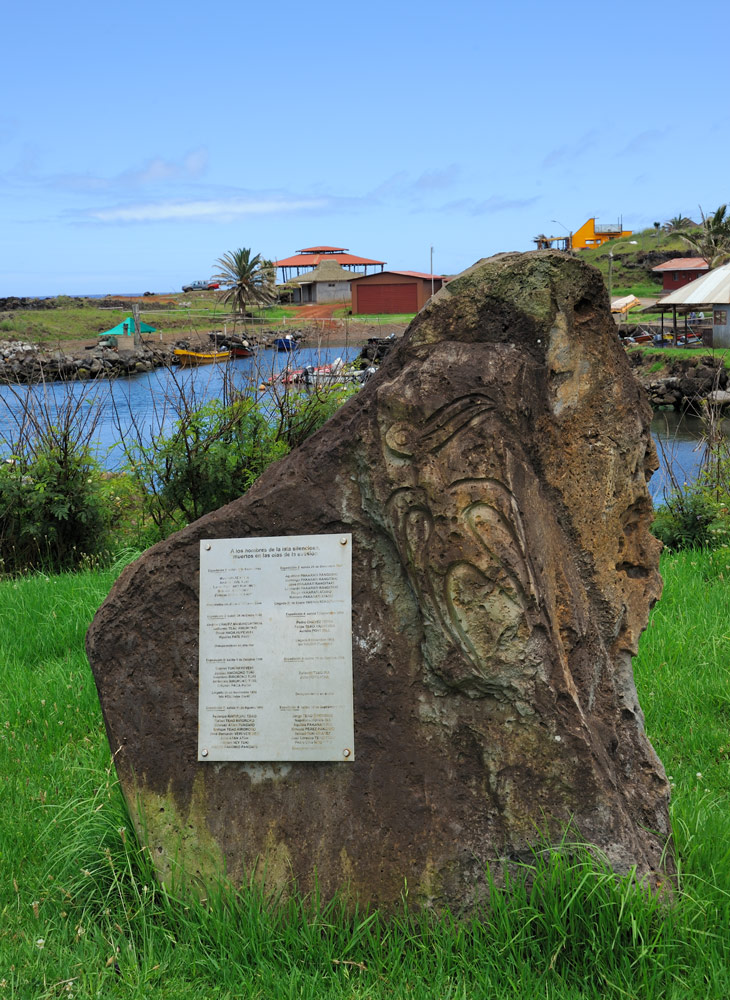
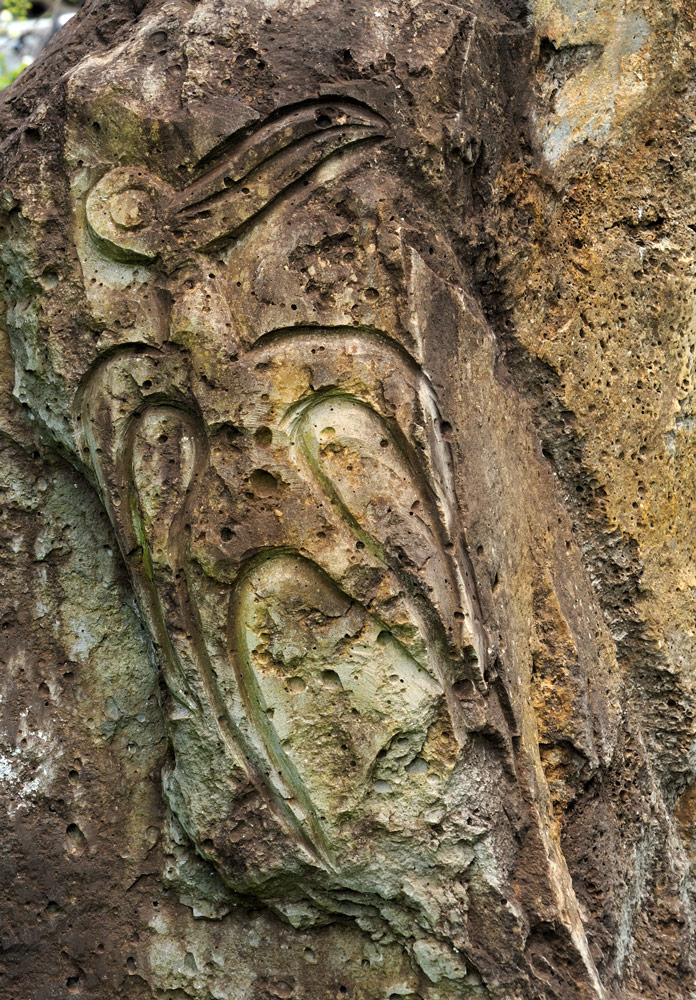
The last bird-man got the egg of black turn in 1867. After this, missionaries took souls of the islander into their well-trained hands, and the islanders once again moved under protection of stronger god.
By the way, the drawing on the stones was very popular on the island.
There is a place Ana Kai Tangata near the town.
It is cove
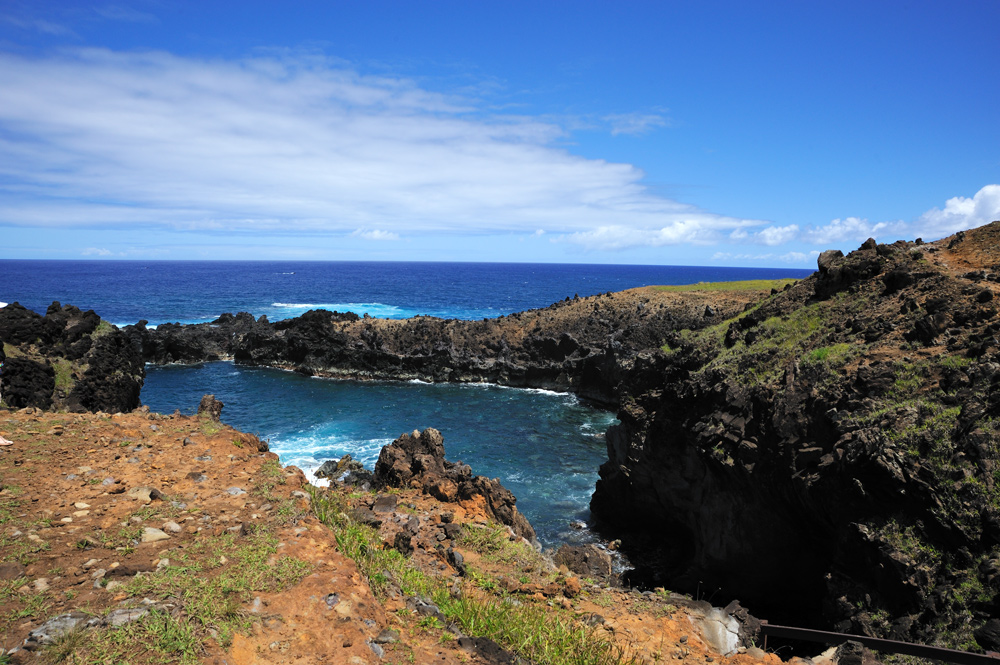


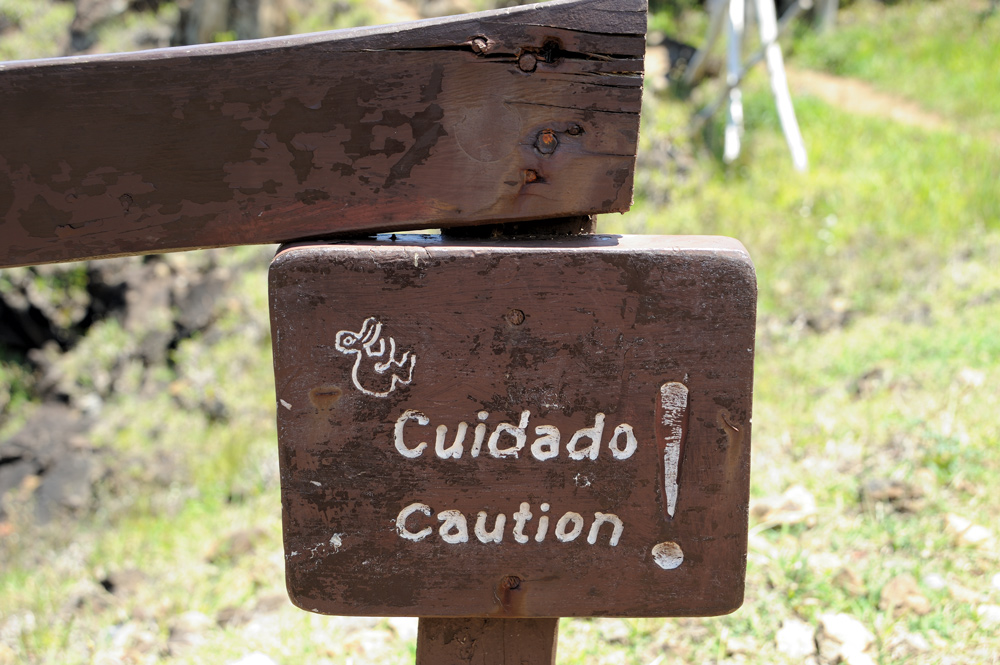
with cave

The top of the cave is painted.
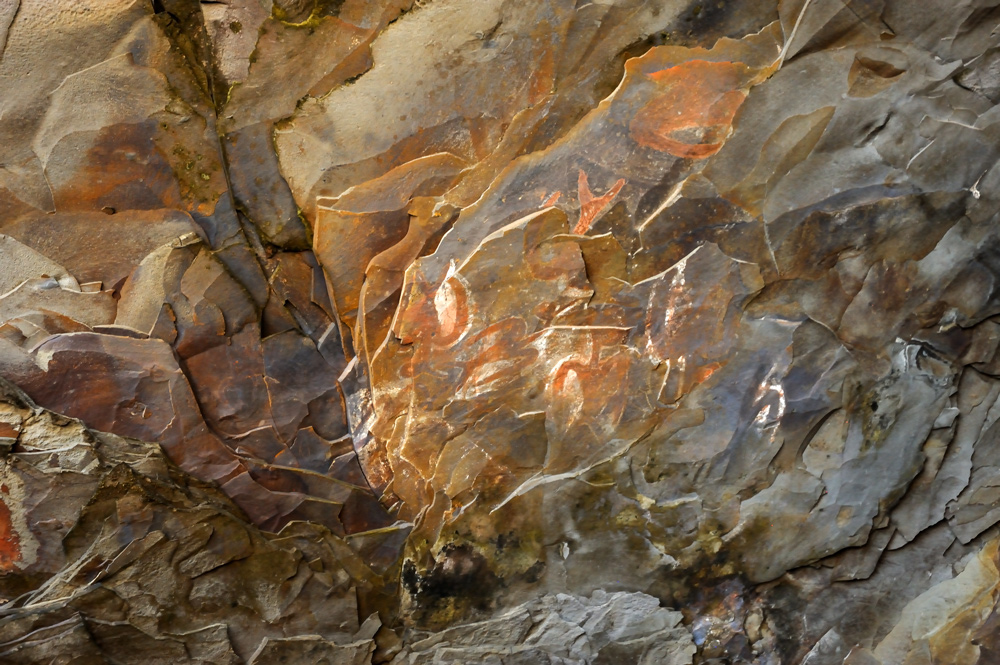
Not much can be seen nowadays, but the cave is nice.
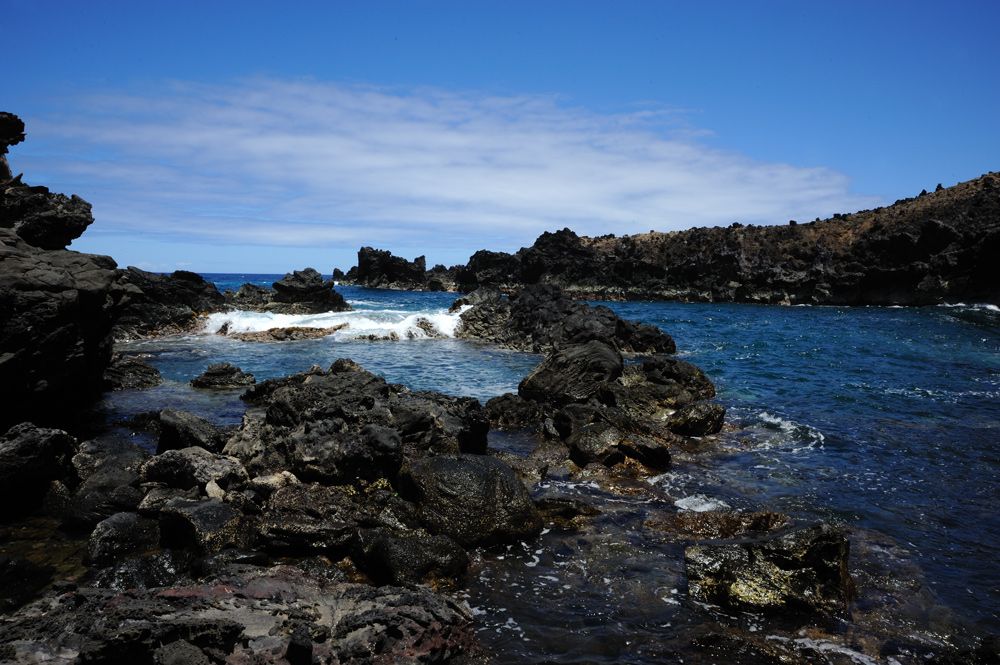
There are plenty of place with petroglyphs on the island, unfortunately, most of the pictures in such condition that it is difficult to recognize the image.
Place Papa Vaka on the north of the island has a big collection of petroglyphs.
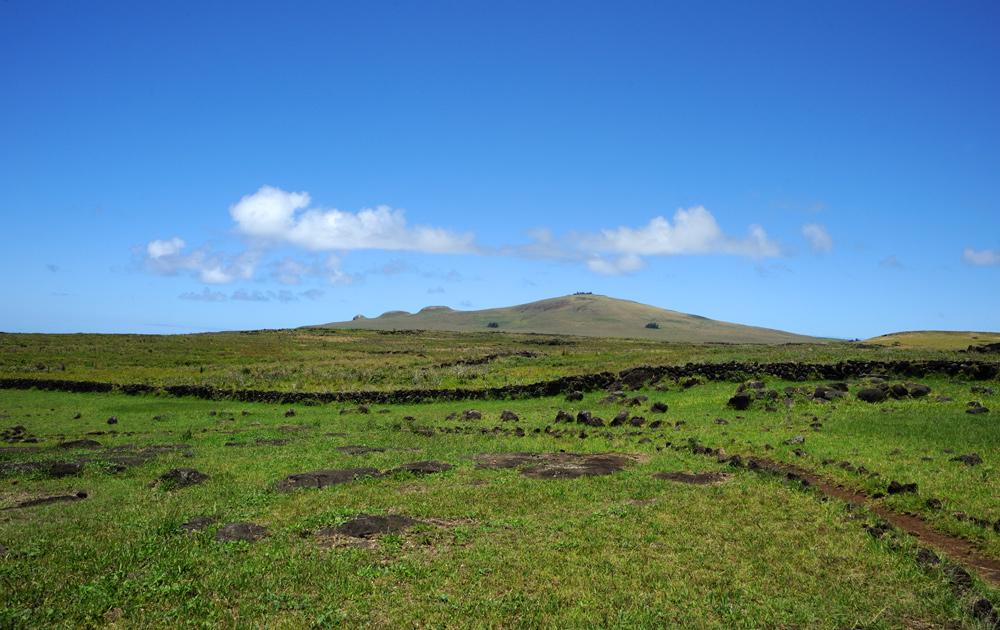
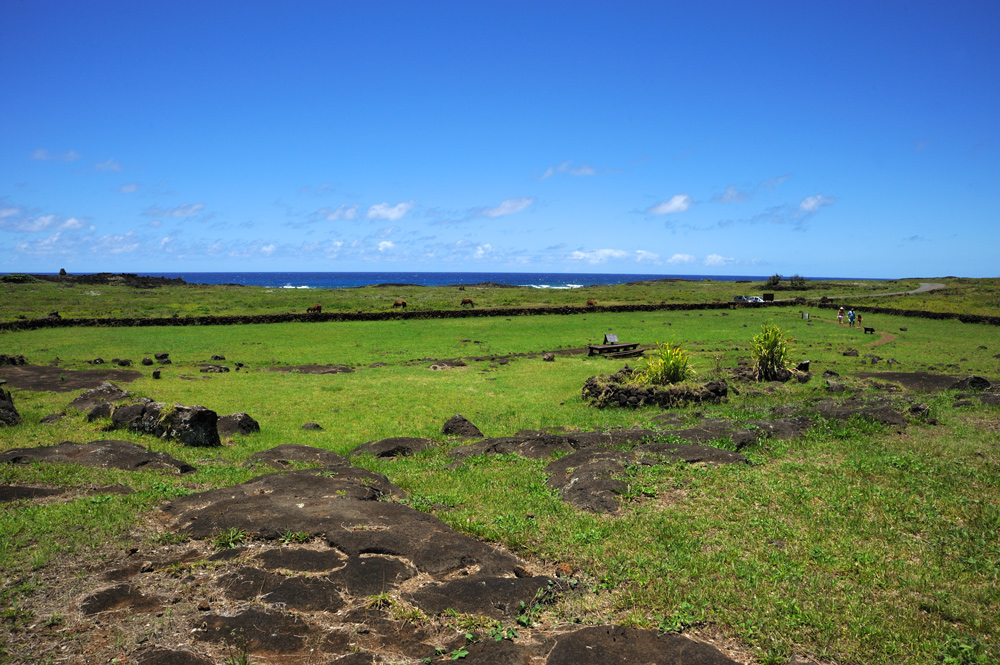
In most cases, the only way to understand the image is to read a sign. For example, this ski-track represent a canoe.

These are a tortilla and an octopus.
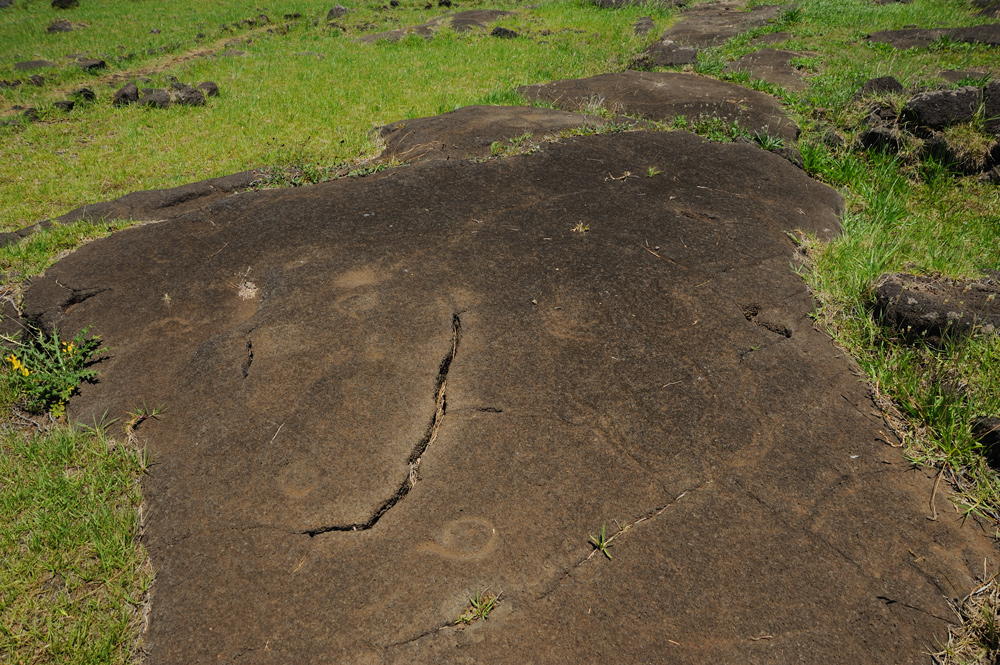
At least this fish is a fish without a doubt.
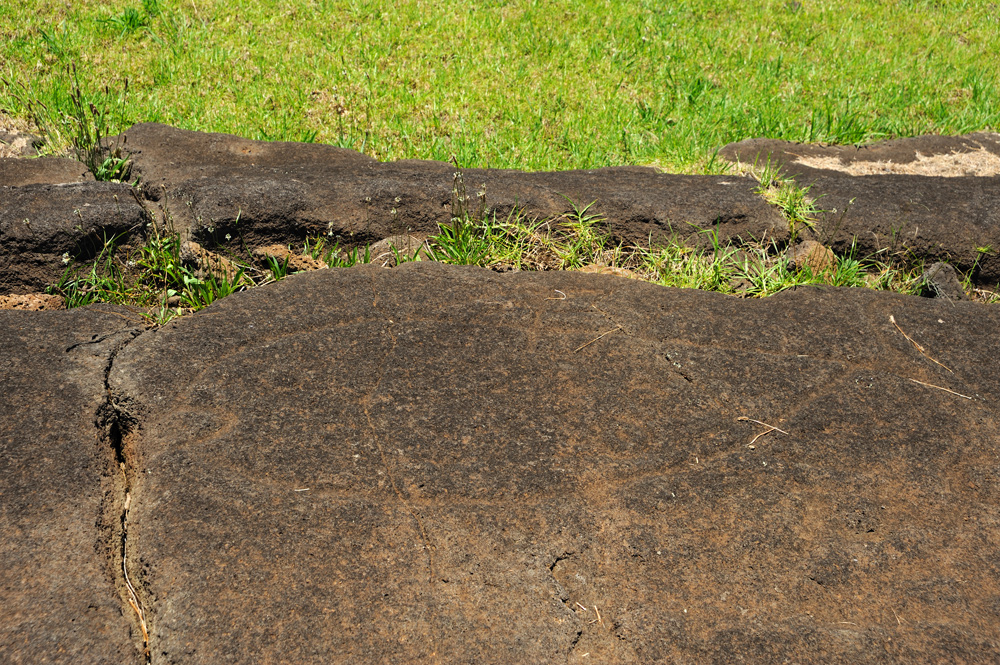
Expedition of Jabob Roggeven met on the island not only moai but curious islanders, cane huts, playing kids, hens and other marks of the inhabited island. The expedition that came 50 years later did not see anybody at first glance. Villages were empty, huts collapsed. However, later people suddenly appeared out of the thin air.